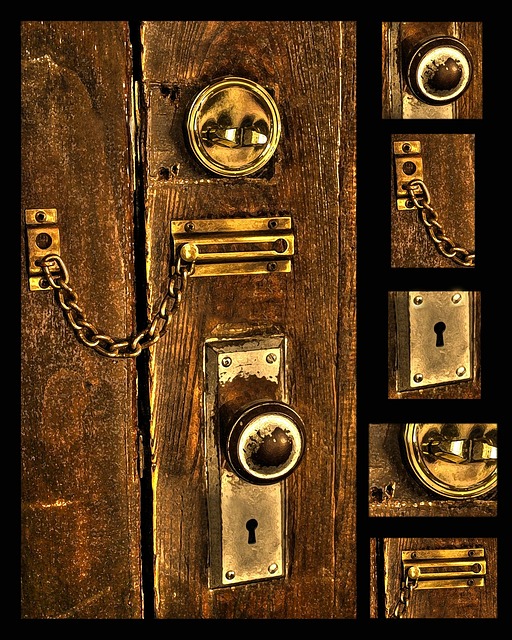Access control systems are essential for modern home security, offering customizable access through technologies like keycards and biometric scanners. Professional installation ensures seamless integration, robust security, and aesthetic appeal. Selection requires considering specific needs, property size, and lifestyle, with features like remote monitoring and mobile access. Installation involves thorough assessment, system design, customization, and testing, followed by maintenance for optimal performance. Regular checks, testing, lubrication, and replacements maintain system integrity, ensuring continuous security.
“Elevate your home’s security with expert installation of residential access control systems. This comprehensive guide explores the intricacies of access management, offering insights into its basic principles and advanced benefits. From understanding system fundamentals to choosing tailored solutions, we delve into the step-by-step process, ensuring seamless integration and enhanced safety. Learn how professional installation optimizes performance and discover maintenance tips for longevity. Master the art of access control and transform your home’s security landscape.”
- Understanding Access Control Systems: The Basics of Residential Security
- Benefits of Professional Installation for Seamless Integration and Enhanced Safety
- Choosing the Right Access Management Solutions for Your Home
- Step-by-Step Process: From Assessment to Final Setup
- Ensuring Optimal Performance and Maintenance Tips for Longevity
Understanding Access Control Systems: The Basics of Residential Security

Access control systems are an essential component of modern residential security, offering homeowners peace of mind and enhanced safety. These systems manage who can enter a property, typically through door or gate access, using various technologies such as keycards, biometric scanners, or codes. The basic setup involves a control panel that manages all access points, linked to locks or barriers.
For homes, these systems provide a robust defence against unauthorised entry, with options for individual user access, time-based restrictions, and remote monitoring. Efficient access management allows homeowners to grant temporary access to guests or service providers while maintaining control and security. This technology is transforming residential security, ensuring that homes remain safe and secure in an increasingly complex world.
Benefits of Professional Installation for Seamless Integration and Enhanced Safety

The expert installation of residential access control systems offers significant advantages, ensuring seamless integration and heightened safety for homeowners. Professional installers possess the specialized knowledge and experience to navigate complex security landscapes, tailoring solutions to meet individual needs. They understand the importance of subtle yet robust system design, ensuring components blend harmoniously with existing infrastructure. This meticulous approach prevents unsightly wires or conspicuous hardware, maintaining a home’s aesthetic appeal while enhancing its defensive posture.
Moreover, professional installation prioritizes enhanced safety through proper configuration and testing. Experts can integrate advanced access management features like biometric authentication, multi-factor authorization, and dynamic access policies, creating a layered defense against unauthorized entry. Regular maintenance and system monitoring by professionals also ensure optimal performance, rapid issue resolution, and timely updates, keeping homes secure in an ever-evolving security landscape.
Choosing the Right Access Management Solutions for Your Home

When considering an access control system for your home, choosing the right solutions is paramount. The first step involves evaluating your specific security needs and preferences. Factors such as the size of your property, number of residents, and lifestyle play a crucial role in determining the most suitable system. For instance, a smart lock might be enough for smaller homes with low security concerns, while larger properties may require a more comprehensive setup including surveillance cameras, biometric access, and a central control panel.
Access management solutions have evolved to offer advanced features like remote monitoring, mobile access, and integration with other home automation systems. It’s important to research different brands and models, considering factors like reliability, ease of use, and compatibility with your existing tech stack. Consulting with security experts can provide valuable insights, ensuring you select a system that offers both robust security and a seamless user experience.
Step-by-Step Process: From Assessment to Final Setup

The initial stage of expert installation involves a thorough assessment of the property’s security needs, existing infrastructure, and specific requirements for access management. This critical step ensures that the access control system is tailored to provide optimal security while aligning with the homeowner’s preferences. The assessment includes an on-site visit, where installers evaluate factors like entry points, potential vulnerabilities, and desired features such as biometric authentication or keycard access.
Following the assessment, the team creates a detailed plan outlining the system’s design, components required, and proposed layout. This is when the magic of customisation happens—the plan is tailored to fit the unique needs of each home. Once approved, the installation process begins, involving the meticulous setup of readers, controllers, and access points. The final step includes programming and testing, ensuring every feature functions seamlessly before providing homeowners with a comprehensive guide for system operation and maintenance.
Ensuring Optimal Performance and Maintenance Tips for Longevity

To ensure optimal performance, regular maintenance is key for residential access control systems. Professionals should perform routine checks to verify all components are functioning correctly and address any issues promptly. This includes testing sensors, cameras, and readers for accurate readings and response times, as well as lubricating mechanical parts and replacing worn-out items to maintain system efficiency.
Longevity of the access control system can be extended by establishing a maintenance schedule. Programmed inspections allow for proactive problem-solving before breakdowns occur, minimizing downtime and enhancing security continuity. Additionally, keeping detailed records of maintenance activities and system upgrades ensures that any future issues can be diagnosed and resolved swiftly, maintaining the integrity of the overall access management strategy.
When it comes to safeguarding your home, expert installation of residential access control systems is a smart investment. By choosing professional services, you ensure seamless integration of cutting-edge technology into your security arsenal. This not only enhances safety but also provides peace of mind, knowing your property is protected by the latest in access management solutions. Remember, proper setup and ongoing maintenance are key to maximizing the benefits of these systems, ensuring your home remains a secure sanctuary.
